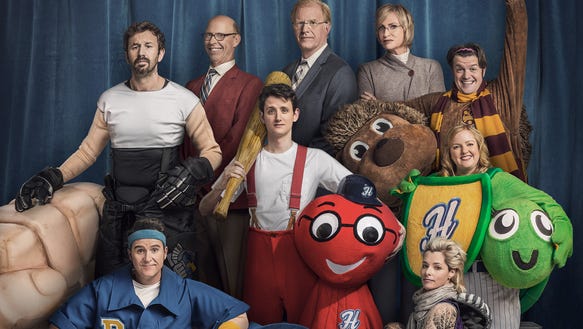The Anne Hathaway starring hybrid
film “Colossal” solves the problems of both blockbuster spectacles and formulaic
romantic comedies. Rom-coms often suffer from a lack of tension in the drama,
leading to forced conflict that undermines the characters, and blockbusters
often overlook their characters in favor of eye-popping visuals and ratcheting
the stakes in the plot. Like the designer-dog puggle breed, that stops a pug’s
snorting and stops a beagle’s howling, Nacho Vigalondo’s first English-language
feature blends the two Hollywood traditions in a mutually beneficial way.
Anne Hathaway returns to her “Rachel
Getting Married” acting toolbox, playing another mess who’s looking for
redemption and respect at the same time. Her character Gloria returns to her
small town after getting kicked out of her boyfriend’s (Dan Stevens) swanky New
York apartment. While sulking in the
streets of her hometown, she runs into an old high school friend named Oscar
(Jason Sudeikis) who’s been recently divorced and trying to keep his father’s
bar alive. Figuring that she might need a
leg up, he offers Gloria a part-time job, unaware of her history with
alcoholism.
Meanwhile, in Seoul South Korea a
giant monster appears roughly the same time every night, seemingly unaware of
its surroundings and stumbling into buildings before mysteriously disappearing
into thin air. After watching the TV footage of this phenomena, Gloria and
Oscar realize that the monster only appears across the globe whenever she
visits the a grade-school park after a long night of drinking. When Gloria has some conflicts at work and
her ex decides to come back to visit her, this heightened sense of personal
responsibility is challenged further.
Vigalondo’s film works on a number
of allegorical levels. Obviously there’s
the commentary about alcoholism and its relationship to our past traumas and
the many damages it can cause by accident. Hathaway’s interaction with fragile
masculinity as an active female character is also fascinating to observe.
Again, by flipping the romantic comedy love-triangle trope on its head, this
story explores the inherent misogyny bred into that stock fantasy.
The movie also discusses how the
media treats disasters and wars abroad as a form of endless news
cycle-entertainment. Having been released between two fresh bombings performed
overseas by our government, and having watched certain news commentators wax
poetic about the aesthetic beauty of our missile launches, the film's depictions of American's glued to the televised destruction seems all
the more prescient.
Despite some undercooked narrative
vagueness surrounding a couple short flashbacks and some truncated special effect sequences
that gives away movie’s limited budget, “Colossal” executes it’s quirky goals
fantastically. Sudeikis and Hathaway are great at shifting back and forth from
comedic amiability to dramatically tense, and their arc is always reinforced by
the movie’s larger ambitions as a commentary on genre cinema. Given that audiences
are inundated by many movies per year about giant robots vs. giant monsters (“Power
Rangers,” “Transformers,” “Pacific Rim”), it’s nice to finally see one with a
core concern for relatable human experiences.
Grade: B+
Originally published in the Idaho State Journal/Apr-2017
Listen to this week's episode of Jabber and the Drone to hear more conversation about "Colossal"















